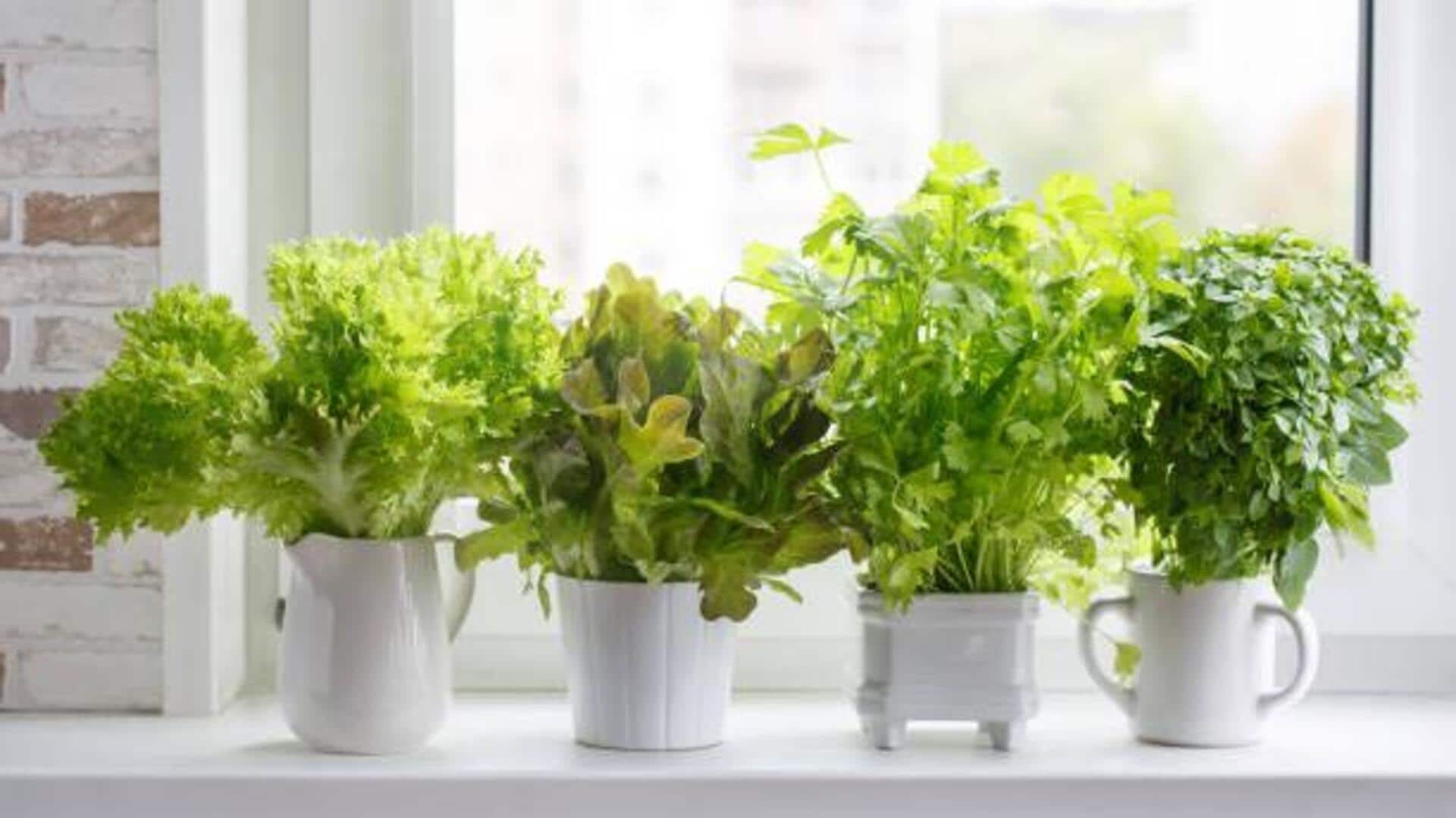
How to grow kitchen herbs
What's the story
Growing kitchen herbs at home can be a fulfilling and economical way to have a constant supply of fresh and flavorful ingredients. Herbs are among the simplest plants to propagate, but the process also lets you grow your garden without shelling out additional money. Be it an expert gardener or a novice, these propagation techniques can help you multiply your herbs effectively. Here are five easy ways to propagate your favorite kitchen herbs.
Water method
Water propagation for quick results
Water propagation works well for most herbs, including basil and mint. Just cut a healthy stem from the plant, remove the lower leaves, and put it in a glass of water. Make sure that the nodes (where leaves were removed) are submerged in water, since this is where roots will grow. Change the water every few days to keep it from stagnating, and see roots forming within one to two weeks.
Soil method
Soil propagation for strong roots
Soil propagation is basically planting herb cuttings directly into potting soil. This works particularly well with rosemary and thyme. Take a cutting (about four inches long), remove the bottom leaves, and dip the cut end in rooting hormone (if available). Plant it in moist potting soil, ensuring the stem and soil have good contact. Keep it in indirect sunlight until roots establish.
Layering method
Layering technique for larger plants
Layering works well for bigger herb plants like sage or oregano having flexible stems near the ground. Simply bend a low-growing stem down so that part of it touches the soil surface while remaining attached to the parent plant. Cover this part with soil, keeping some leaves above ground level. Roots will develop at this buried part over time.
Division technique
Division method for clump-forming herbs
Division is perfect for clump-forming herbs like chives or lemongrass that grow in clusters from their root systems underground, instead of single stems above ground level alone. Dig up an established plant carefully during its dormant period (early spring generally). Then separate the individual clumps gently using hands before replanting them elsewhere around your garden space accordingly.
Seed starting
Seed starting indoors year-round
Starting seeds indoors also allows you to grow herbs throughout the year. Fill seed trays with good quality potting mix and sow seeds according to packet instructions (depth and spacing). Place the trays near windowsills that get plenty of sunlight to keep them warm. Once they germinate, transplant the seedlings to bigger containers outdoors when the weather permits safe growth and enjoy harvests.